Seeking the next big thing in tech? The transition to Web3 isn’t just an evolution; it’s a revolution, creating fertile ground for groundbreaking Web3 business opportunities.
By 2025, the Web3 market is projected to reach $81.5 billion, driven by innovations in decentralized finance (DeFi), NFTs, and AI integration. This article provides a deep dive into the most promising best Web3 business ideas, offering a strategic blueprint for entrepreneurs ready to capitalize on this transformative shift.
Web 2.0 offers centralized control and data monopolies, whereas Web3, powered by blockchain, promises a decentralized, transparent, and user-centric internet. This fundamental change unlocks a universe of best Web3 business ideas, offering pathways to build profitable ventures that resonate with the demands of a new digital era.
Within this comprehensive guide, we’ll dissect the core concepts, uncover hidden potential, and equip you with the knowledge to make informed decisions about launching your Web3 venture. Consider this your essential resource for navigating the exciting world of decentralized business.
Decoding Web3: Core Concepts
Before diving into specific business models, let’s solidify our understanding of the technological and philosophical underpinnings of this transformation: Web3. Imagine an internet where you have true ownership of your digital assets, where transactions are verifiable and secure, and where power is distributed across a network rather than concentrated in the hands of a few dominant corporations. This is the core promise of Web3.
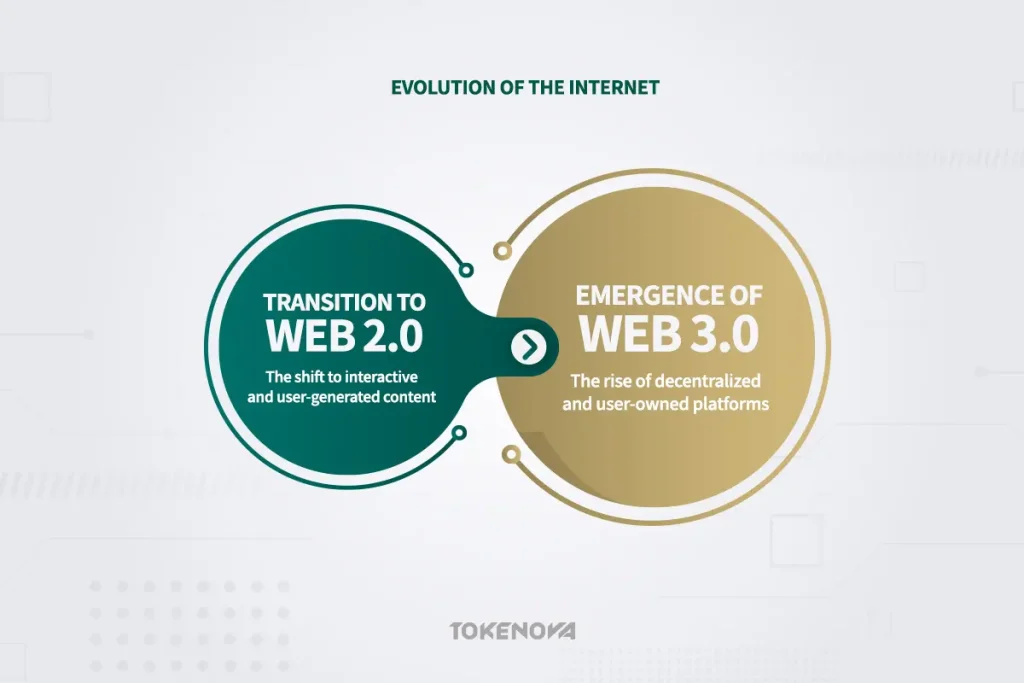
Fundamentally, Web3 leverages technologies like blockchain, decentralized autonomous organizations (DAOs), and semantic web principles to create a more equitable and user-controlled online experience. The integration of AI agents into Web3 ecosystems is expected to revolutionize decentralized finance (DeFi) and gaming by 2025. This transition from the read-write web of Web 2.0 to the read-write-own web of Web3 has profound implications for businesses across all sectors. Think of it as moving from renting your digital space to owning it.
The shift from Web 2.0 to Web3 isn’t merely a technical upgrade; it represents a fundamental shift in how we interact with the internet. Web 2.0 brought us social media giants, e-commerce platforms, and mobile applications, but it also raised significant concerns about data privacy, censorship, and the immense power wielded by centralized entities. Web3 business opportunities directly address these concerns, offering solutions built on principles of transparency, security, and user empowerment.
The potential for profitability in Web3 business ventures is substantial, fueled by the growing demand for a more democratic and trustworthy digital environment. For instance, the increasing awareness of data breaches and the desire for greater control over personal information are driving users towards Web3 alternatives.
Key Factors: Evaluating Web3 Ventures
Venturing into the realm of best Web3 business ideas requires careful evaluation. Not every concept will translate into a successful and sustainable business. Here are critical factors to consider as you explore your options:

Market Demand: Identifying Web3 Needs
Pinpoint industries and niches where the core tenets of Web3 decentralization, transparency, and user ownership resonate most strongly. Look for areas where existing Web 2.0 solutions fall short or where users are actively seeking alternatives. Consider the burgeoning interest in digital ownership, creator empowerment, and secure financial transactions. The tokenization of real-world assets (RWAs) is projected to become a $16 trillion market by 2030, with significant growth expected in 2025. For example, the growing frustration with centralized social media platforms and their opaque algorithms indicates a strong market demand for decentralized alternatives.
Innovation: Disruptive Web3 Models
Focus on business models that leverage the unique capabilities of Web3 to create truly disruptive solutions. Avoid simply replicating Web 2.0 models on a blockchain; instead, think critically about how decentralization can unlock entirely new possibilities and value propositions. The most compelling Web3 business opportunities are those that offer something fundamentally different and demonstrably better than existing solutions. Think about how NFTs can revolutionize digital ownership or how DAOs can create more democratic organizational structures.
Scalability: Future-Proofing Your Web3 Business
Ensure your chosen best Web3 business idea possesses the inherent potential to grow and adapt as the Web3 ecosystem matures. Consider the scalability of the underlying blockchain technology and the potential for your business model to accommodate increasing user adoption and transaction volumes. For example, consider the transaction throughput limitations of certain blockchains when planning a high-volume application.
Revenue Streams: Monetizing Decentralization
Explore diverse and sustainable monetization avenues within the Web3 landscape. This could encompass transaction fees, token sales, premium features, subscription models, or innovative approaches unique to decentralized environments, such as staking rewards or governance participation. A well-defined and robust revenue strategy is paramount for the long-term viability of any Web3 business venture.
Regulatory Compliance: Navigating the Web3 Legalities
The regulatory landscape surrounding Web3 is still in its nascent stages and is constantly evolving. Thoroughly understand the legal implications of your chosen business idea and ensure strict compliance with relevant regulations in your target markets. Proactive navigation of this aspect is crucial for avoiding potential legal hurdles and ensuring the longevity of your Web3 business venture.
Top Web3 Business Ideas: Your Decentralized Launchpad
Let’s now explore the best Web3 business ideas. Each of these areas presents significant potential for entrepreneurs ready to embrace the decentralized revolution and build the future of the Internet.
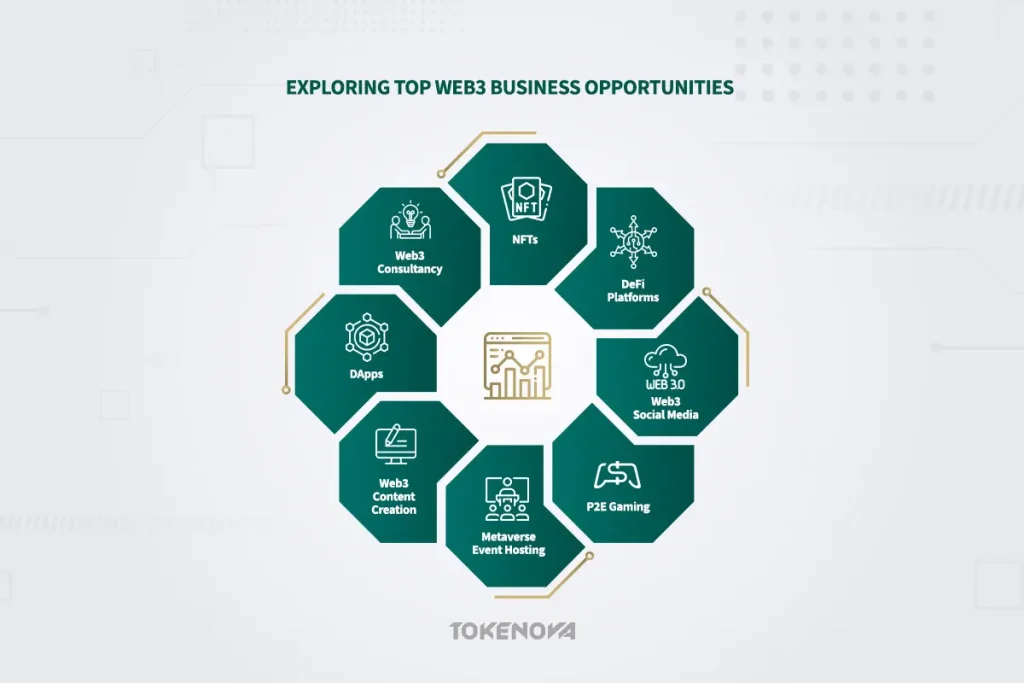
1. Non-Fungible Tokens (NFTs): Utility Beyond Collectibles
Emphasize Utility and Interoperability. The long-term value of NFTs lies in their practical applications and ability to interact across different platforms and metaverses.
Non-Fungible Tokens (NFTs) have moved beyond the initial hype surrounding digital art and collectibles. By 2025, NFTs are expected to expand into utility-driven applications such as ticketing, digital identity, and supply chain management, with platforms like LiveNation already adopting NFT-based ticketing systems.
While digital art remains a significant application, the true power of NFTs lies in their ability to represent ownership of unique digital or even physical assets. NFTs are essentially unique digital certificates recorded on a blockchain, making them verifiable and tamper-proof. Their applications are vast and continuously expanding, making them a cornerstone of numerous Web3 business opportunities.
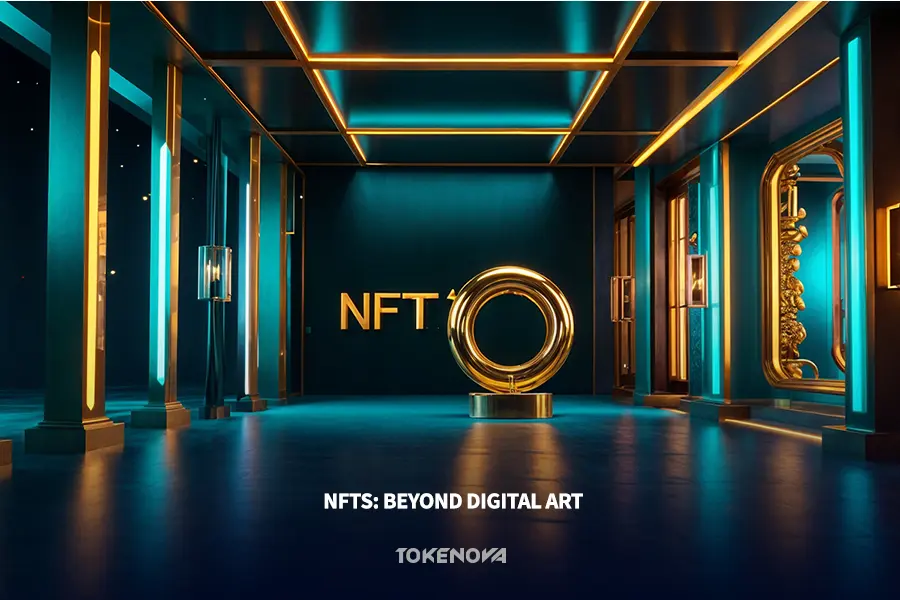
NFT Marketplaces: Curating Digital Ownership Experiences
The most visible application of NFTs is in the realm of digital art and collectibles. NFT marketplaces provide platforms for creators to mint, sell, and trade their unique digital creations. While the initial market saw speculative bubbles, the sector is maturing, with a growing emphasis on curated collections and genuine artistic merit.
Building a niche NFT marketplace focused on specific art forms, collectibles, or communities with shared interests can be a highly lucrative venture. Consider marketplaces specializing in generative art, music NFTs with embedded royalties, or virtual real estate deeds within specific metaverses. Platforms like OpenSea, while broad, have paved the way, and newer platforms like Foundation are focusing on curated art.
NFTs for Real-World Assets (RWAs): Bridging Physical and Digital Ownership
Imagine owning a fraction of a luxury apartment building represented by an NFT, or verifying the authenticity of a rare collectible through a blockchain-backed token. This is the burgeoning field of Real-World Asset (RWA) tokenization. NFTs can be used to tokenize tangible assets, making them more liquid, divisible, and easily transferable. Businesses can explore using NFTs for fractional ownership of real estate, authentication of luxury goods, or even tracking ownership of intellectual property. For example, companies like RealT are already tokenizing real estate, allowing investors to purchase fractions of properties.
NFTs for Access and Experiences: Unlocking Exclusive Communities and Events
NFTs can function as digital keys, granting holders access to exclusive communities, events (both physical and virtual), or premium content. Think of NFTs that provide membership to a private online community, access to exclusive concerts or conferences, or early access to product launches or software betas. This utility-driven approach to NFTs creates tangible value for holders and unlocks new revenue streams for businesses. Projects like Bored Ape Yacht Club have successfully used NFTs for community access and exclusive perks.
Profitability and Market Trends: While the NFT market experiences volatility, the underlying technology and its utility are driving sustained interest. Marketplaces typically charge transaction fees, and creators can earn royalties on secondary sales, creating recurring revenue streams. The key is to focus on building strong communities and offering NFTs with genuine utility and lasting value. According to a report by DappRadar, the NFT market generated billions in trading volume in recent years, highlighting its significant economic potential.
2. Decentralized Finance (DeFi) Platforms: Rebuilding Financial Infrastructure
Prioritize Security Audits and Transparency. Trust is paramount in DeFi. Rigorous security audits and transparent operations are crucial for building user confidence.
Decentralized Finance (DeFi) aims to recreate traditional financial services lending, borrowing, trading, and investing on a blockchain, eliminating the need for intermediaries like banks and brokers. This creates a more transparent, accessible, and efficient financial system, opening up numerous Web3 business opportunities. DeFi seeks to democratize finance, making it accessible to anyone with an internet connection.

DeFi Lending and Borrowing Platforms: Peer-to-Peer Financial Services
DeFi lending platforms enable users to lend and borrow cryptocurrencies directly from each other, without the involvement of traditional financial institutions. By 2025, DeFi 2.0 platforms will focus on improved security, scalability, and user experience, with AI-powered risk assessment tools reducing bad debt by 80%. These platforms utilize smart contracts to automate the lending and borrowing process, ensuring transparency and security through code.
Building a secure and user-friendly DeFi lending platform that caters to specific needs, such as undercollateralized loans for reputable borrowers or loans secured by niche crypto assets, can be a highly profitable venture. Established platforms like Aave and Compound have demonstrated the viability of this model, with billions in assets locked in their protocols.
DeFi Staking and Yield Farming Services: Earning Passive Income in a Decentralized World
Staking involves locking up cryptocurrencies to support the operation of a blockchain network and earning rewards in return, similar to earning interest on a savings account. Yield farming involves lending or staking cryptocurrencies on DeFi platforms to earn interest or other rewards, often by providing liquidity to decentralized exchanges.
Businesses can offer services that simplify the often complex staking and yield farming process for users, providing automated strategies, risk assessment tools, and portfolio management. This caters to users seeking passive income opportunities within the Web3 ecosystem. Platforms like Lido Finance have gained significant traction by simplifying staking for various blockchains.
Decentralized Exchanges (DEXs): Trading Crypto Without Central Control
Decentralized exchanges (DEXs) allow users to trade cryptocurrencies directly with each other, peer-to-peer, without relying on a central authority like Coinbase or Binance. DEXs offer greater transparency, control over funds, and often lower fees compared to centralized exchanges. Building a user-friendly and efficient DEX with innovative features, such as advanced trading tools, limit orders, or support for specific niche tokens, can attract a significant user base. Uniswap and SushiSwap are prominent examples of successful DEXs, demonstrating the demand for decentralized trading solutions.
Profitability and Market Trends: The DeFi market has experienced significant growth, driven by the desire for greater financial control and potentially higher yields compared to traditional finance. DeFi platforms generate revenue through transaction fees, borrowing interest, and other service charges. The key to success lies in building secure, transparent, and user-friendly platforms that offer competitive rates and innovative features. According to DeFi Pulse, the total value locked (TVL) in DeFi protocols remains substantial, indicating the continued growth and adoption of decentralized financial services.
3. Web3 Social Media Platforms: Reclaiming Online Social Interaction
Focus on User Data Sovereignty and Community Governance. Differentiate your platform by giving users true ownership of their data and a voice in platform governance.
The current social media landscape is dominated by centralized platforms that control user data and content, often with opaque algorithms and censorship policies. Web3 social media platforms aim to disrupt this model by giving users ownership of their data, fostering more transparent algorithms, and enabling community-driven governance. Platforms like Mastodon and Mirror have seen exponential growth, with Mastodon reaching 50 million users by end of 2024.

Decentralized Social Networks: Empowering Users and Communities
Imagine a social network where you truly own your profile data and content, and where algorithms are transparent and potentially even community-governed. This is the core vision of decentralized social networks. Built on blockchain technology, these platforms offer greater privacy, security, and resistance to censorship.
Building a user-friendly and engaging decentralized social network that prioritizes user ownership and offers innovative features like built-in monetization tools is a significant Web3 business opportunity. Projects like Mastodon (while not strictly blockchain-based, it’s decentralized) and newer blockchain-based platforms like Lens Protocol are exploring this space.
Tokenized Communities: Rewarding Engagement and Contribution
Web3 enables the creation of tokenized communities where members are rewarded with cryptocurrency tokens for their engagement, contributions, and participation in the community. These tokens can be used for governance (voting on proposals), access to exclusive content or features, or as a form of social currency within the community. Building platforms that facilitate the creation and management of these tokenized communities, offering tools for token distribution, governance mechanisms, and community engagement, can be a valuable service.
Decentralized Content Creation Platforms: Fairer Compensation for Creators
Current content creation platforms often take a significant cut of creators’ earnings and exert considerable control over content distribution. Web3 content creation hubs leverage blockchain to enable creators to monetize their content directly through NFTs, micro-payments in cryptocurrency, or other decentralized mechanisms, ensuring fairer compensation and greater control over their work.
Building platforms that empower creators and connect them directly with their audience, offering tools for content minting, distribution, and monetization, is a promising Web3 business opportunity. Platforms like Mirror (for writing) and Audius (for music) are pioneering this approach. As Chris Dixon, a general partner at Andreessen Horowitz, notes, “Web3 gives creators more ownership and control over their work and how it’s distributed.”
Profitability and Market Trends: The demand for more privacy-focused and user-centric social media alternatives is growing, fueled by concerns about data privacy and censorship on traditional platforms. Web3 social platforms can generate revenue through transaction fees, premium features, or by facilitating the creation and sale of NFTs or community tokens. The key is to build platforms that offer a compelling user experience and address the shortcomings of existing centralized platforms.
4. Play-to-Earn (P2E) Gaming: Where Entertainment Meets Economics
Focus on Fun and Sustainable Tokenomics. A successful P2E game needs to be genuinely enjoyable to play and have a well-designed in-game economy that rewards players without causing inflation.

Play-to-Earn (P2E) gaming has introduced a revolutionary concept to the gaming industry: allowing players to earn real-world rewards, often in the form of cryptocurrency or NFTs, for their time and effort spent playing games. By 2025, the GameFi market is expected to grow by 40%, with AAA studios entering the space and focusing on sustainable tokenomics. These games typically incorporate NFTs representing in-game assets and cryptocurrencies for in-game transactions and rewards, creating vibrant in-game economies.
Developing Engaging P2E Games: The Future of Interactive Entertainment
The foundation of the P2E movement lies in creating compelling and enjoyable games that seamlessly integrate blockchain technology. This involves designing engaging gameplay mechanics, developing sustainable in-game economies that balance rewards and inflation, and integrating NFTs for verifiable ownership of in-game assets. Building a successful P2E game requires a blend of traditional game development expertise and a deep understanding of blockchain economics and tokenomics. Games like Axie Infinity and The Sandbox have demonstrated the significant potential of this model, attracting millions of players worldwide.
P2E Gaming Guilds: Empowering Players and Investors Through Shared Resources
P2E gaming guilds are communities of players who pool resources, often by lending or renting out valuable in-game NFTs, to enable more players to participate in P2E games and share the earned rewards. These guilds often provide scholarships (access to NFTs) to new players, allowing them to participate in P2E games without significant upfront investment. Building and managing successful P2E gaming guilds, providing training, resources, and community support, can be a profitable venture.
Infrastructure and Tools for P2E Games: Supporting the Growing Ecosystem
The P2E gaming ecosystem requires robust infrastructure, including tools for managing in-game assets, facilitating secure and efficient transactions, and providing analytics and data insights for game developers and players. Businesses can focus on building these essential tools and services, such as NFT marketplaces specifically for game assets, blockchain explorers tailored for gaming transactions, or analytics dashboards for tracking in-game economies, to support the continued growth of the P2E gaming industry.
Profitability and Market Trends: The P2E gaming market has experienced rapid growth, attracting both traditional gamers and investors interested in the earning potential. P2E games generate revenue through the initial sale of in-game assets (NFTs), transaction fees within the game’s marketplace, and potentially through staking or other DeFi mechanisms integrated into the game. The key to long-term success is creating games with genuinely engaging gameplay and sustainable in-game economies that reward players for their participation without leading to hyperinflation of in-game assets.
5. Metaverse Event Hosting: Crafting Immersive Digital Experiences
Focus on Interactivity and Social Connection. The metaverse offers opportunities for events that go beyond passive viewing. Design experiences that encourage interaction and foster a sense of community.
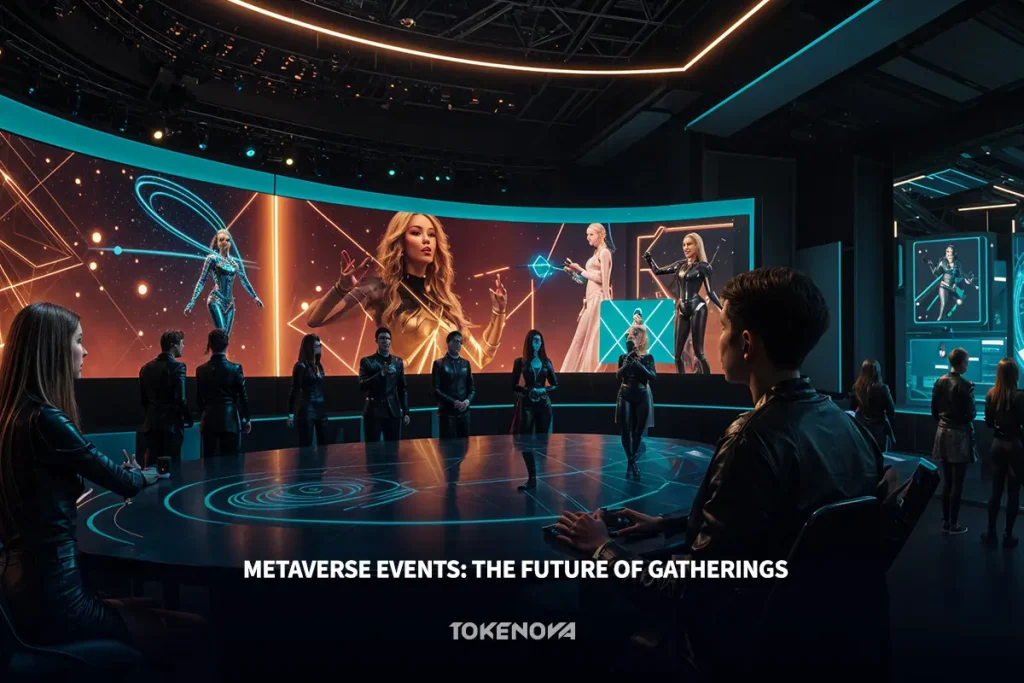
The metaverse represents a persistent, shared, and often immersive virtual world where users can interact with each other, digital objects, and experiences. By 2025, the metaverse economy is expected to surpass $2 billion, with major brands like Nike and Gucci already establishing virtual stores in platforms like Decentraland. Metaverse event hosting involves creating and managing virtual events, concerts, conferences, educational sessions, and other gatherings within these immersive digital environments.
Building Virtual Event Venues and Experiences: The Architecture of the Metaverse
Creating visually stunning and functionally rich virtual event venues within various metaverse platforms is a crucial aspect of this business idea. This involves designing 3D environments, integrating interactive elements like virtual avatars and spatial audio, and ensuring seamless user experiences across different devices. Companies are already building virtual concert halls and conference centers within platforms like Decentraland and The Sandbox.
Hosting Immersive Virtual Events: Transcending Physical Limitations
The metaverse offers the unique potential to host events that transcend the limitations of the physical world. Imagine attending a live concert with holographic performers interacting with the virtual audience, or participating in a global conference with attendees from around the world seamlessly interacting in a shared virtual space. Businesses can specialize in organizing and hosting these immersive virtual events, handling aspects like ticketing, virtual stage design, and attendee engagement.
Tools and Platforms for Metaverse Events: Facilitating Seamless Virtual Gatherings
The metaverse event industry requires specialized tools and platforms for event management, ticketing (often using NFTs), virtual avatar customization, and seamless user interaction within the virtual environment. Developing these essential tools and services, such as platforms for creating interactive virtual booths or tools for managing large-scale virtual attendee interactions, can be a valuable contribution to the growth of the metaverse event industry.
Profitability and Market Trends: As the metaverse continues to develop and user adoption grows, the demand for engaging and well-organized virtual events is expected to increase significantly. Businesses can generate revenue through ticket sales for virtual events, sponsorships from brands looking to reach metaverse audiences, and by providing virtual event management and venue creation services.
6. Web3 Content Creation Hubs: Empowering Creators and Their Audiences
Prioritize Creator Control and Transparent Monetization. Offer creators maximum control over their content and clear, transparent ways to earn revenue directly from their audience.
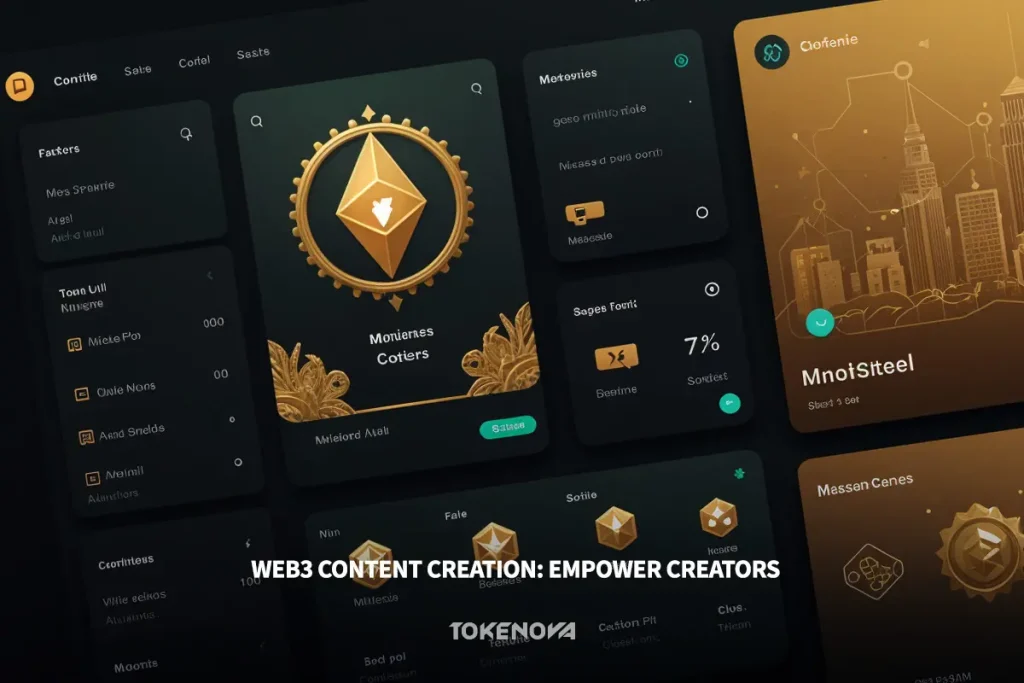
Web3 content creation hubs are platforms that leverage blockchain technology to enable creators to monetize their content directly, without relying on intermediaries like YouTube or Patreon. By 2025, NFT-based content marketplaces are expected to grow significantly, with platforms like Mirror facilitating over $100 million in direct reader-to-writer payments. This fosters a more equitable and transparent ecosystem for both creators and their audiences.
Decentralized Blogging Platforms: Owning Your Digital Narrative
Imagine a blogging platform where you own your content and data, stored immutably on a blockchain, and where censorship is minimized due to the decentralized nature of the platform. Decentralized blogging platforms built on blockchain offer this level of control and ownership to writers and content creators. Platforms like Mirror allow writers to publish content and monetize it through NFTs.
NFT-Based Content Marketplaces: Directly Connecting Creators and Fans
NFTs provide a powerful mechanism for creators to sell their digital content directly to their audience, bypassing traditional marketplaces and retaining a larger share of the revenue. This can apply to various forms of content, including digital art, music, videos, and even written articles.
Decentralized Video and Streaming Platforms: Taking Back the Digital Airwaves
Similar to blogging platforms, decentralized video and streaming platforms offer creators greater control over their content, distribution, and monetization strategies. These platforms can leverage blockchain for content ownership verification, micro-payments for viewing content, and community governance.
Profitability and Market Trends: The growing desire for fairer compensation and greater control over content is driving the development and adoption of Web3 content creation platforms. These platforms can generate revenue through transaction fees on content sales, premium features for creators, or by facilitating the creation and sale of NFTs related to content.
7. Decentralized Applications (DApps): Building the Next Generation of Applications
Focus on Tangible Benefits and User Adoption. The most successful DApps will offer clear advantages over traditional applications and prioritize a smooth user onboarding experience.
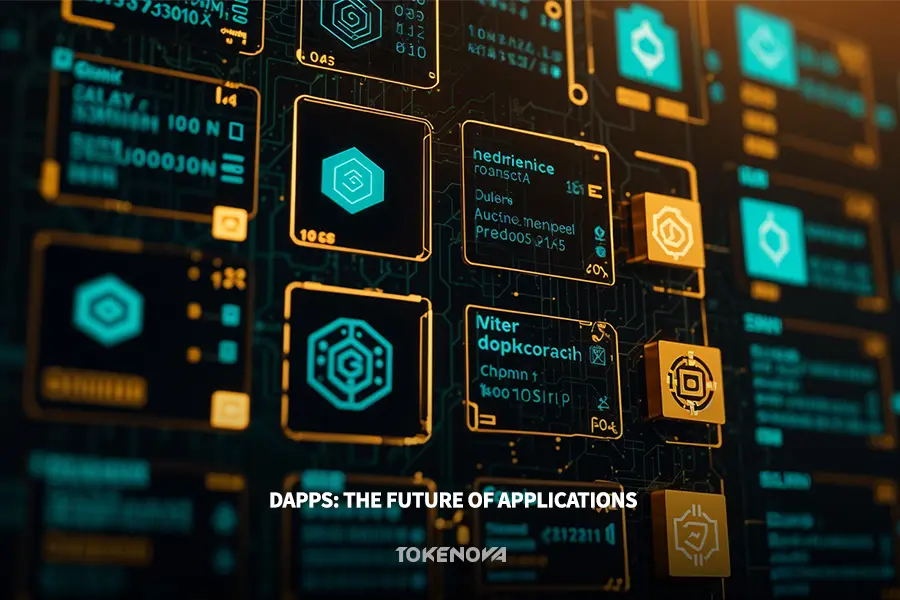
Decentralized Applications (DApps) are applications built on blockchain technology, offering greater transparency, security, and user control compared to traditional centralized applications. By 2025, modular blockchains and rollups will dominate the DApp ecosystem, with projects like Celestia raising $100 million to improve scalability and interoperability. The potential applications of DApps are vast and span across numerous industries.
DeFi DApps: The Building Blocks of a Decentralized Financial System
Many of the DeFi platforms discussed earlier are themselves built as DApps. Developing innovative DeFi DApps that offer novel financial services, improve the efficiency of existing DeFi protocols, or cater to specific niche financial needs represents a significant Web3 business opportunity.
Supply Chain Management DApps: Enhancing Transparency and Traceability
Blockchain technology can be used to create DApps that track goods and products throughout the supply chain, providing greater transparency, accountability, and immutability of records. This can help combat counterfeiting, improve efficiency in logistics, and build trust among consumers regarding product origin and authenticity.
Healthcare DApps: Secure and Patient-Centric Data Management Solutions
DApps can be used to create secure and patient-centric healthcare data management systems, giving individuals greater control over their medical records and facilitating secure and permissioned data sharing among healthcare providers, improving data privacy and interoperability.
Voting and Governance DApps: Enabling Transparent and Secure Decision-Making
Blockchain-based voting and governance DApps can provide more transparent, secure, and auditable mechanisms for online voting and decision-making within organizations, DAOs, and online communities, enhancing trust and participation.
Profitability and Market Trends: The increasing demand for secure, transparent, and user-centric applications is driving the growth of the DApp ecosystem. DApps can generate revenue through transaction fees, subscription models for premium features, or by offering specific services within their application.
8. Web3 Consultancy Services: Guiding Businesses Through Decentralization
Develop Deep Expertise in a Specific Web3 Niche. Focus on a particular technology, industry application, or regulatory aspect of Web3 to become a sought-after specialist.

As businesses across various sectors increasingly explore the potential and implications of Web3 technologies, the demand for expert guidance and support in navigating this complex landscape is rapidly growing. Web3 consultancy services provide specialized knowledge and assistance to businesses looking to understand, integrate, and leverage Web3 technologies effectively.
Technical Consulting: Building and Implementing Web3 Solutions for Businesses
This area involves helping businesses develop and implement specific Web3 solutions, such as building custom DApps, integrating blockchain technology into existing systems, developing NFT strategies for marketing or customer engagement, or setting up decentralized identity solutions.
Strategic Consulting: Identifying Web3 Opportunities and Use Cases for Specific Industries
This type of consulting focuses on helping businesses identify relevant and impactful use cases for Web3 technologies within their specific industry, developing strategic roadmaps for adoption, and assessing the potential benefits and risks.
Legal and Regulatory Consulting: Navigating the Evolving Web3 Legal Framework
This specialized area focuses on providing legal and regulatory guidance to businesses operating in the Web3 space, ensuring compliance with evolving regulations related to cryptocurrencies, NFTs, data privacy, and other relevant legal frameworks.
Marketing and Community Building for Web3 Projects: Reaching the Decentralized Audience
This involves helping Web3 projects develop effective marketing strategies, build and engage with their online communities, and promote their products or services to the target audience within the Web3 ecosystem.
Profitability and Market Trends: The demand for skilled Web3 professionals and consultants is high and continues to increase as more businesses explore and adopt these technologies. Consultants can charge hourly or project-based fees, offering significant earning potential for those with the right expertise.
Emerging Trends: The Future of Web3 Business
The Web3 landscape is dynamic and constantly evolving, with new trends and innovations emerging regularly. Keeping an eye on these trends is crucial for identifying future Web3 business opportunities:
- AI and Blockchain Integration: AI-powered decentralized systems are optimizing decision-making and automating tasks. For example, Chainlink’s AI-enhanced oracles have reduced transaction times by 75%.
- Real-World Asset (RWA) Tokenization: Tokenized assets like real estate and art are projected to reach a $16 trillion market by 2030, democratizing access to investments.
- DeFi 2.0: Enhanced security and scalability are driving DeFi growth, with Aave’s AI tools reducing bad debt by 80%.
- Metaverse Economy: Virtual real estate markets surpassed $2 billion in 2024, with brands like Nike generating 15% of digital sales from the metaverse.
- Decentralized Social Media: Platforms like Mastodon and Mirror are empowering users, with Mastodon reaching 50 million users in 2024.
- Utility-Driven NFTs: NFTs are expanding into ticketing, education, and supply chains, with LiveNation using NFT tickets to prevent fraud.
- DAOs: Decentralized governance is thriving, with MakerDAO acquiring a chartered bank and nonprofit DAOs raising $100 million for global causes.
- Sustainability: Green blockchain innovations, like Ethereum’s PoS transition, are reducing energy consumption by 99.9%.
- Zero-Knowledge Proofs (ZKPs): ZKPs are ensuring privacy in DeFi and identity verification, with Zcash adoption growing 500% in 2024.
- Prediction Markets: Blockchain-based platforms like Polymarket are revolutionizing data-driven forecasting.
Strategies for Web3 Success: From Idea to Impact
Prioritize User Experience and Onboarding. Make it easy for users, even those unfamiliar with Web3, to understand and interact with your product or service.
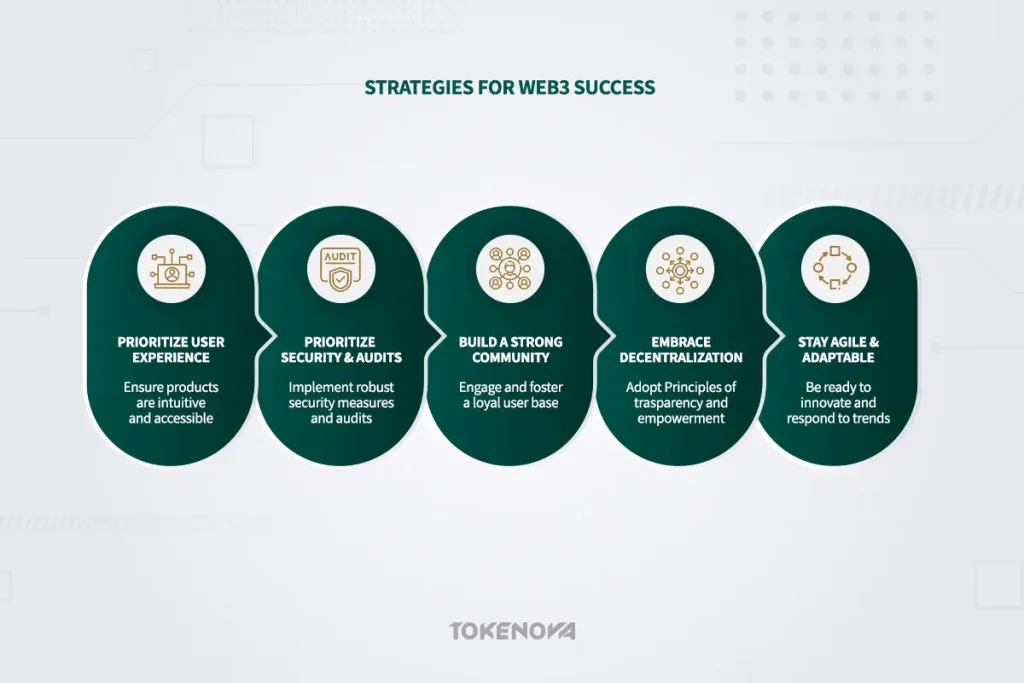
Turning your best Web3 business idea into a successful and impactful venture requires more than just a brilliant concept. Here are key strategies to consider for navigating the Web3 landscape:
- Focus on User Experience (UX): Make your Web3 products and services intuitive, easy to use, and accessible, even for users who are new to blockchain technology and decentralized concepts.
- Prioritize Security and Audits: Implement robust security measures to protect user data and digital assets. Regularly audit your smart contracts and systems to identify and address potential vulnerabilities.
- Build a Strong and Engaged Community: Community is paramount in Web3. Actively engage with your users, foster a sense of belonging, and build a loyal following around your project.
- Embrace the Principles of Decentralization: Truly embrace the core tenets of decentralization, transparency, and user empowerment in your business model and operations.
- Stay Agile and Adaptable: The Web3 space is rapidly evolving, so be prepared to adapt your strategies, innovate continuously, and respond to emerging trends and technologies.
Ready to turn your Web3 vision into reality? Navigating the complexities of this new digital frontier can be challenging. That’s where Tokenova comes in.
Tokenova: Your Partner in Building the Decentralized Future
At Tokenova, we empower entrepreneurs and businesses to thrive in the Web3 revolution. Whether you’re launching an NFT project, building a DeFi platform, or exploring metaverse opportunities, our expert team provides the guidance and support you need to succeed.
Our Services Include:
- Web3 Strategy & Consulting: We help you define your Web3 vision, identify opportunities, and develop a winning strategy.
- Blockchain Development: Our experienced developers build secure and scalable DApps, smart contracts, and blockchain solutions tailored to your needs.
- Tokenomics Design: We craft sustainable and engaging tokenomics models to drive your project’s growth and community participation.
- Community Building & Marketing: We help you build a strong and engaged community around your Web3 project.
Conclusion
The ongoing transition to Web3 presents unprecedented Web3 business opportunities for forward-thinking entrepreneurs with vision, technical understanding, and a willingness to embrace new paradigms. By thoroughly understanding the underlying technologies, identifying unmet market needs, and focusing on delivering innovative and user-centric solutions, you can build a thriving and impactful business in this transformative new era of the internet.
The best Web3 business ideas effectively leverage the unique capabilities of decentralization to create genuine user value and fundamentally reshape industries. Now is the time to explore these opportunities and become a leader in the decentralized digital economy.
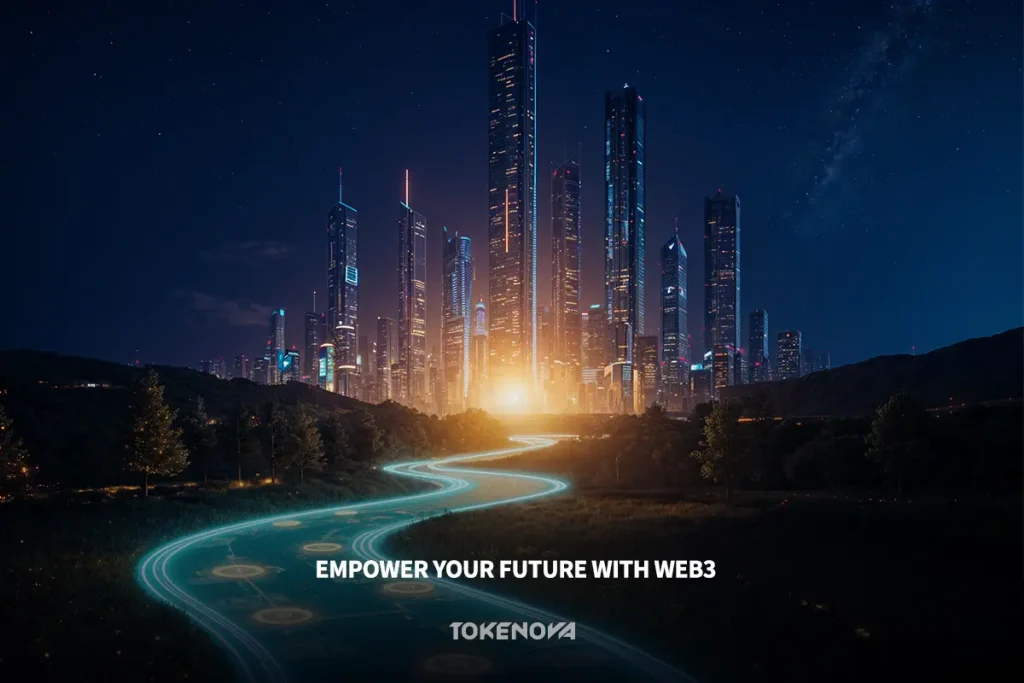
Key Takeaways
- Web3 is a fundamental shift: Understand the core principles of decentralization, user ownership, and transparency.
- Focus on solving real-world problems: Identify specific needs and pain points that Web3 solutions can address.
- Community is paramount for success: Build and actively engage with a strong community around your project.
- Prioritize user experience and robust security: Make your products user-friendly and secure.
- Embrace adaptability and continuous innovation: The Web3 landscape is constantly changing.
.











